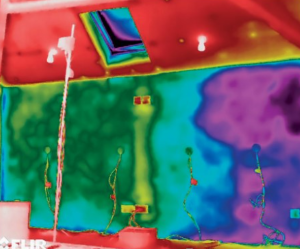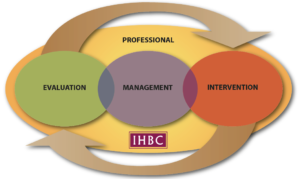 Technical conservation issues are the subject of Issue 164 of Context, more specifically damp, with Soki Rhee-Duverne explaining that, despite the plethora of techniques for assessing moisture in traditional porous building materials, none is completely effective, offering a rare opportunity to address practitioners’ base-line CPD needs in this critical and fast changing area.
Technical conservation issues are the subject of Issue 164 of Context, more specifically damp, with Soki Rhee-Duverne explaining that, despite the plethora of techniques for assessing moisture in traditional porous building materials, none is completely effective, offering a rare opportunity to address practitioners’ base-line CPD needs in this critical and fast changing area.
image: Context 164 p12 – Soki Rhee-Duverne
Soki Rhee-Duverne writes:
… There are many ways to measure moisture, some destructive and others not. Moisture content can be measured either directly or indirectly, based on a variety of physical phenomena. Some are quantitative, measuring absolute moisture content. The majority are semi-quantitative, meaning that they can relate readings to the relative moisture content of materials. If calibration of these techniques is possible, readings can represent actual moisture content. Both semi-quantitative and qualitative methods are reliable only when used comparatively. Differing strategies are available, depending on what is required. Despite the plethora of techniques available, none is completely effective, and all have their limitations…
…evaluating their accuracy [conversion tables or specific calibration values for generic materials] is difficult…
… Overall, the results from the research suggests that most of the techniques tested in the
laboratory can give good, semi-quantitative estimates of moisture levels. However, some devices perform better than others. Of all the capacitance and resistivity meters tested, the CEM capacitance and the Resipod resistance devices gave the best estimates of moisture content over a wide range of moisture conditions, from near-dry to near-saturated.
Despite the plethora of techniques available, none is completely effective…
Other proprietary conductivity and capacitance meters gave a variable performance…
… Manufacturers sometimes provide conversion tables or specific calibration values for generic materials, but evaluating their accuracy is difficult because of the nonhomogeneity of historic materials, ageing, salts and weathering. Most historic buildings are composite structures, which adds another level of complexity.
Read the full article and find out more
See Context 164
Reading Context helps IHBC members develop their skills across all of the IHBC’s Areas of Competence, and so is a critical baseline in addressing priorities in Continuing Professional Development (CPD)
To access Context:
- IHBC Members: See your postbox, if you don’t already have it by your desk or bed
- Non-members: Go to the Context Archive
If you have any suggestions for Context articles or other material contact Mike Taylor at: editorial@ihbc.org.uk
See information on Context’s future issues, guidance for authors
Access the online archive
See more IHBC background and guidance on IHBC CPD and on how you might use past, current and future issues of Context
 See the formal guidance paper on IHBC CPD (scheduled for update)
See the formal guidance paper on IHBC CPD (scheduled for update)
See more on the IHBC Competences and Areas of Competence

